Bamboo plants are a symbol of strength, resilience, and good fortune in many cultures worldwide. Their graceful stalks and lush green leaves make them a popular choice for indoor and outdoor gardens alike. Beyond their aesthetic appeal, bamboo plants are relatively easy to care for, especially when you adopt natural and eco-friendly methods.
If you’re interested in nurturing a healthy bamboo plant without relying on synthetic fertilizers or harsh chemicals, this guide will provide you with all the detailed information you need to care for your bamboo naturally and effectively.
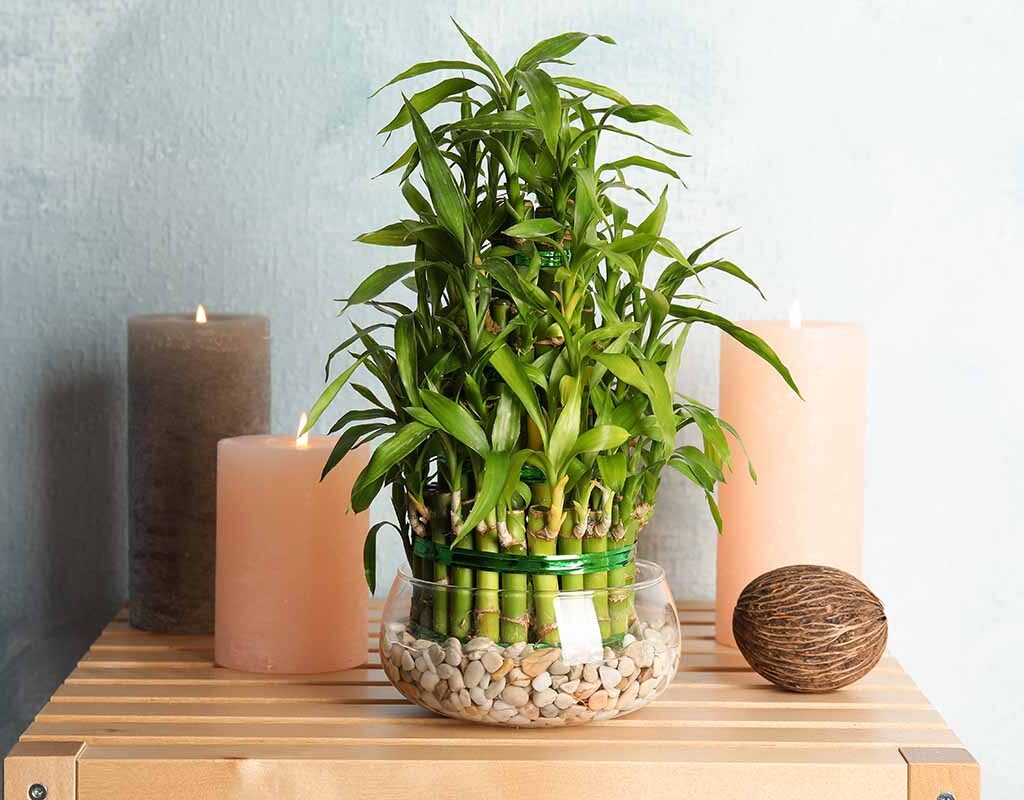
Why Choose Bamboo?
Before diving into natural care tips, it’s worth noting why bamboo is such a fantastic plant to have around:
- Rapid Growth: Bamboo is one of the fastest-growing plants on Earth, making it a renewable resource and a sustainable choice.
- Air Purifier: Bamboo plants can help improve indoor air quality by filtering toxins and releasing oxygen.
- Versatile Decor: Their elegant look suits modern homes, offices, gardens, and even water features.
- Low Maintenance: Bamboo is hardy and resilient, thriving with minimal fuss if cared for properly.
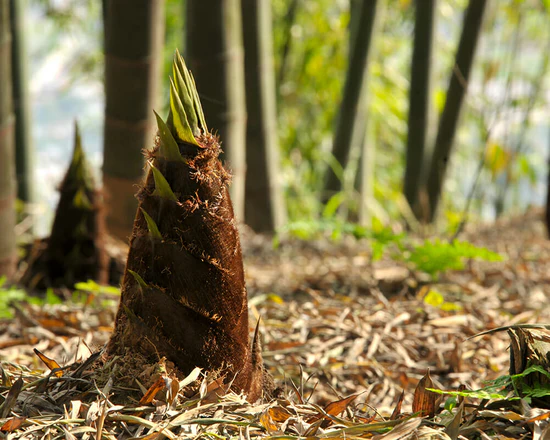
Types of Bamboo Plants Commonly Grown Indoors
When caring naturally for bamboo, it helps to know what type you’re working with:
- Lucky Bamboo (Dracaena sanderiana): Often grown indoors in water or soil; not a true bamboo but has a bamboo-like appearance.
- Clumping Bamboo: Grows in tight clusters and is easier to manage indoors.
- Running Bamboo: Spreads aggressively, better suited for outdoor gardens unless contained.
For this article, the focus will primarily be on Lucky Bamboo and clumping varieties typically grown indoors.
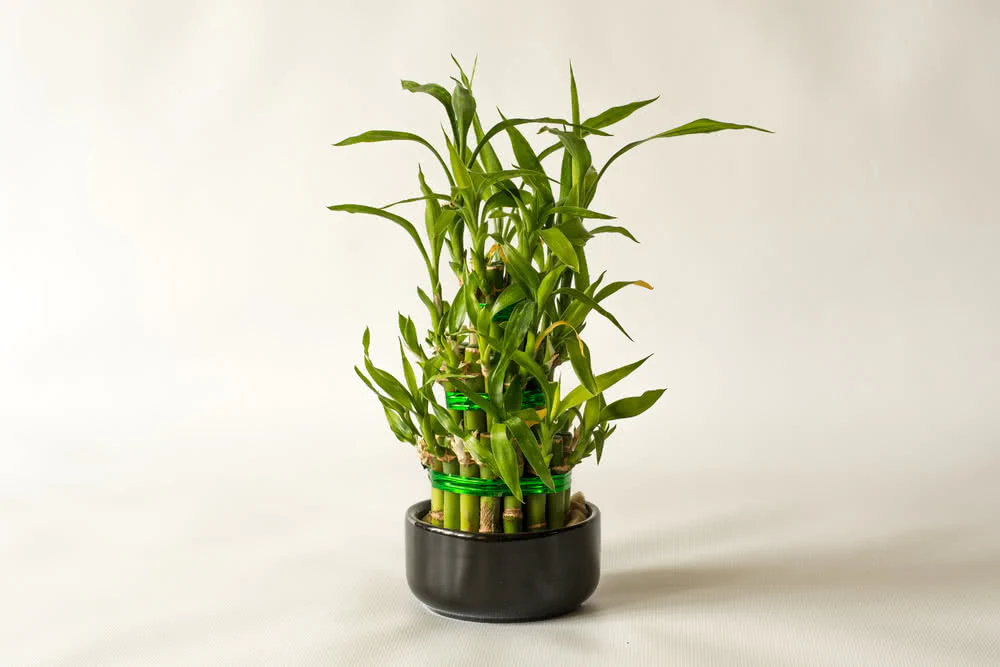
Natural Bamboo Plant Care: A Step-by-Step Guide
1. Light Needs
Bamboo plants prefer indirect, bright light but can tolerate low light conditions.
- Avoid direct sunlight as it can scorch leaves and dry out the plant.
- Place your bamboo near an east or north-facing window to ensure it gets gentle, filtered light.
- In low-light homes, supplement with LED grow lights if necessary.
2. Watering the Natural Way
Proper watering is crucial, especially when avoiding chemicals.
- Lucky Bamboo: Can be grown in water. Change the water every 1-2 weeks to prevent stagnation and bacteria growth.
- Use filtered, distilled, or rainwater to avoid chlorine and fluoride, which can harm the plant.
- If growing in soil, water when the top inch feels dry but avoid waterlogging, as bamboo roots dislike soggy soil.
Tip: Adding a few drops of natural liquid seaweed extract to the water every month can provide a gentle nutrient boost without chemicals.
3. Soil and Potting
For bamboo grown in soil, choose a well-draining, organic potting mix.
- Mix in natural compost or worm castings to enrich the soil.
- Avoid synthetic fertilizers; instead, use organic options like compost tea or diluted fish emulsion for occasional feeding.
- Repot every 1-2 years to refresh soil and allow for root growth.
4. Natural Fertilizing
Bamboo benefits from feeding but with natural fertilizers to keep it chemical-free.
- Use homemade compost tea: Soak compost in water for a few days, strain, and dilute before applying.
- Banana peel fertilizer: Chop banana peels and soak in water overnight to create a potassium-rich natural fertilizer.
- Coffee grounds: Sprinkle a small amount around the base for nitrogen, but don’t overdo it to avoid acidity.
Feed your bamboo plant once every 4-6 weeks during growing seasons (spring and summer).
5. Humidity and Temperature
Bamboo thrives in warm and humid environments.
- Maintain temperatures between 65°F to 90°F (18°C to 32°C).
- Increase humidity naturally by misting leaves with water or placing the pot on a pebble tray filled with water.
- Grouping bamboo plants with other humidity-loving plants can help create a microenvironment with balanced moisture.
6. Pruning and Grooming Naturally
To keep your bamboo looking fresh and healthy:
- Trim yellow or dead leaves with clean scissors to prevent disease.
- Cut back any overgrown stalks to encourage bushier growth.
- Avoid chemical sprays for pests; instead, wipe leaves with a soft damp cloth regularly.
7. Pest Control the Natural Way
Bamboo is fairly resistant but can occasionally attract pests like spider mites or aphids.
- Use a natural spray made of water and mild liquid soap (like castile soap) to control pests.
- Introduce beneficial insects such as ladybugs if outdoors.
- Neem oil diluted in water is a powerful natural pesticide safe for bamboo plants.
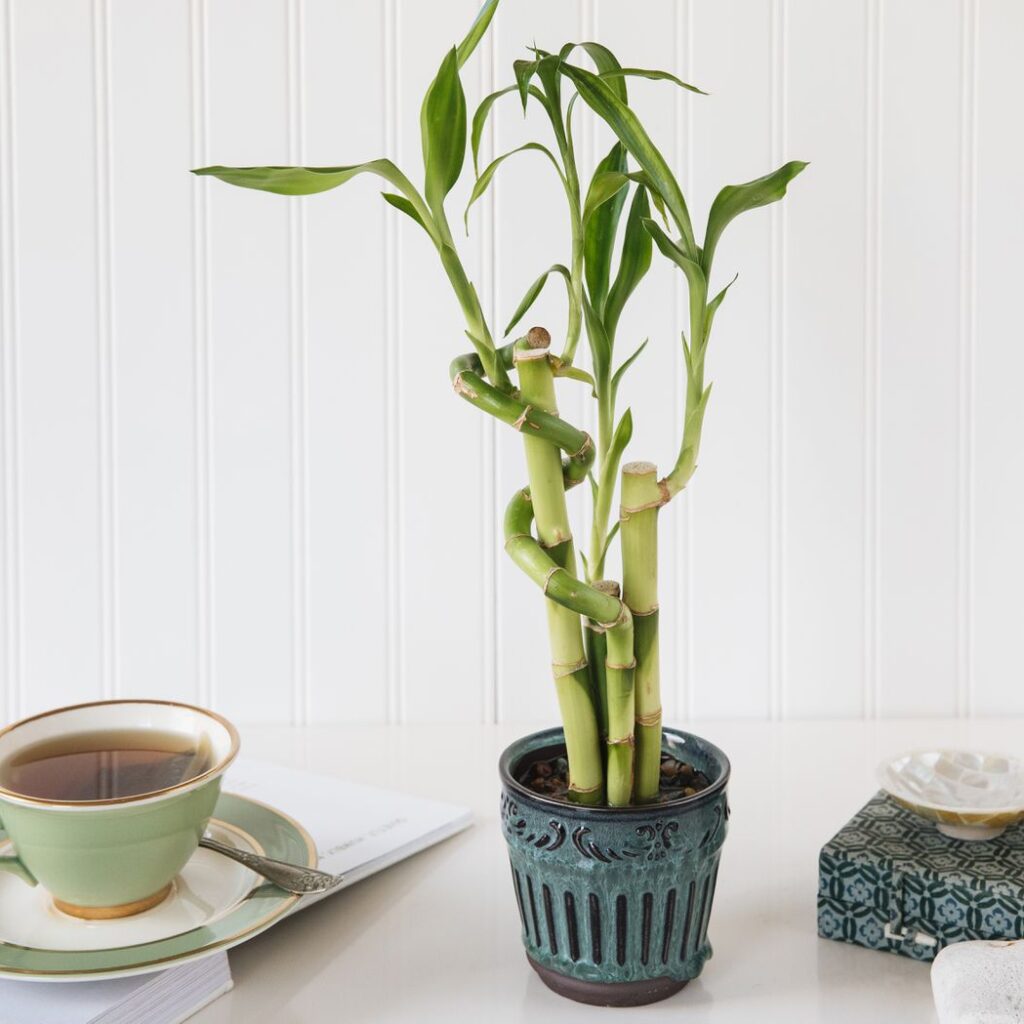
Signs Your Bamboo Plant Needs More Natural Care
- Yellowing leaves: Usually from overwatering, poor water quality, or lack of nutrients.
- Brown leaf tips: Often due to low humidity or too much direct sunlight.
- Slow growth: Could indicate the need for natural fertilization or repotting.
- Wilting or drooping: May mean root problems or underwatering.
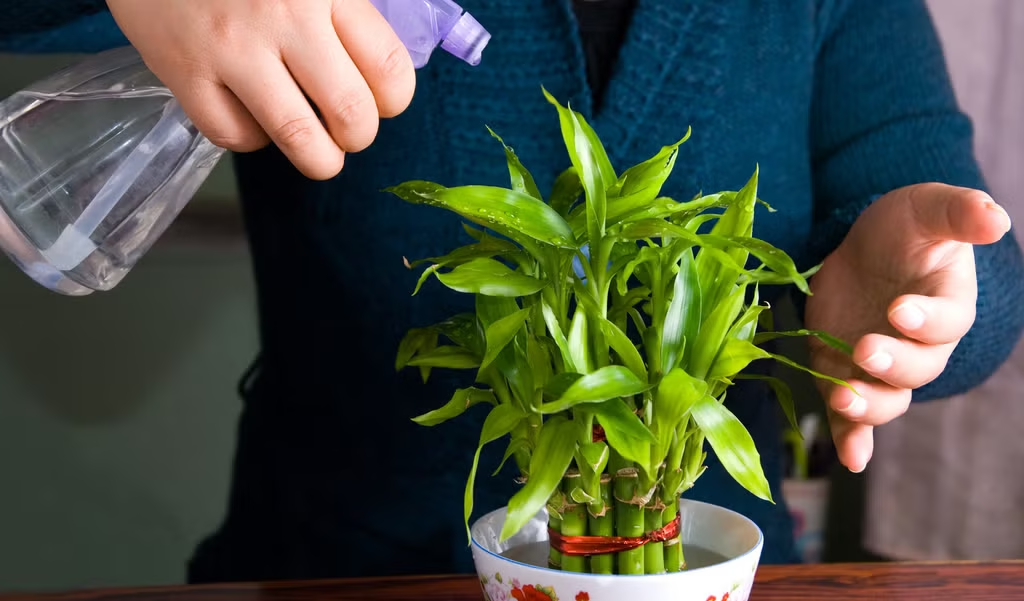
Creative Natural Bamboo Plant Displays
- Place Lucky Bamboo in decorative glass vases with natural river rocks.
- Create a Zen-inspired corner by grouping bamboo with smooth stones, sand, and small water features.
- Use bamboo stalks as natural dividers or screens indoors.
- Incorporate bamboo into terrariums with moss and air plants for a lush, natural look.
Bamboo Propagation Naturally
Propagation is easy and rewarding.
- Cut a healthy stalk with at least two nodes (bumps where leaves grow).
- Place the cutting in clean, filtered water to encourage root growth.
- Change water regularly and provide indirect light.
- Once roots grow to 2-3 inches, transplant into soil or continue growing in water.
Environmental Benefits of Bamboo
Besides their beauty, bamboo plants provide several ecological benefits:
- Bamboo absorbs large amounts of carbon dioxide, helping combat climate change.
- They prevent soil erosion due to their strong root systems.
- Bamboo products are renewable and sustainable alternatives to hardwood and plastic.
By growing bamboo naturally, you contribute to a healthier environment both inside and outside your home.
FAQs About Natural Bamboo Care
Q: Can I use tap water for my bamboo plant?
A: It’s best to avoid tap water with chlorine and fluoride. Use filtered, distilled, or rainwater for healthier plants.
Q: How often should I repot my bamboo?
A: Every 1-2 years, or when roots crowd the pot, to ensure fresh soil and room for growth.
Q: Is bamboo toxic to pets?
A: Lucky Bamboo (Dracaena sanderiana) can be toxic to cats and dogs, so keep it out of their reach.
Final Thoughts: Embracing Natural Bamboo Care
Caring for bamboo plants naturally is not only rewarding but also supports a sustainable lifestyle. With a few simple steps—providing the right light, water, organic nutrients, and pest control—you can nurture beautiful, healthy bamboo plants that bring peace and vitality to your space.
Remember, nature provides everything your bamboo needs to thrive. By choosing natural care methods, you’re creating a harmonious environment where your bamboo can grow strong and lush, enhancing your home with its timeless elegance.

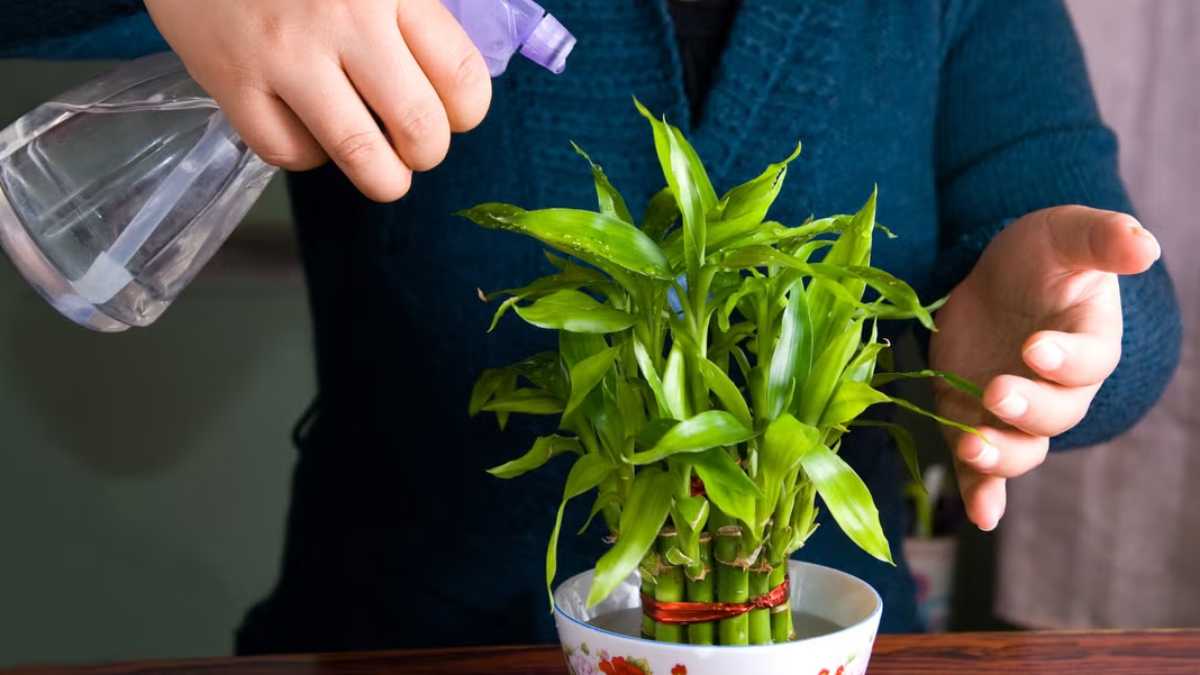




Leave A Comment